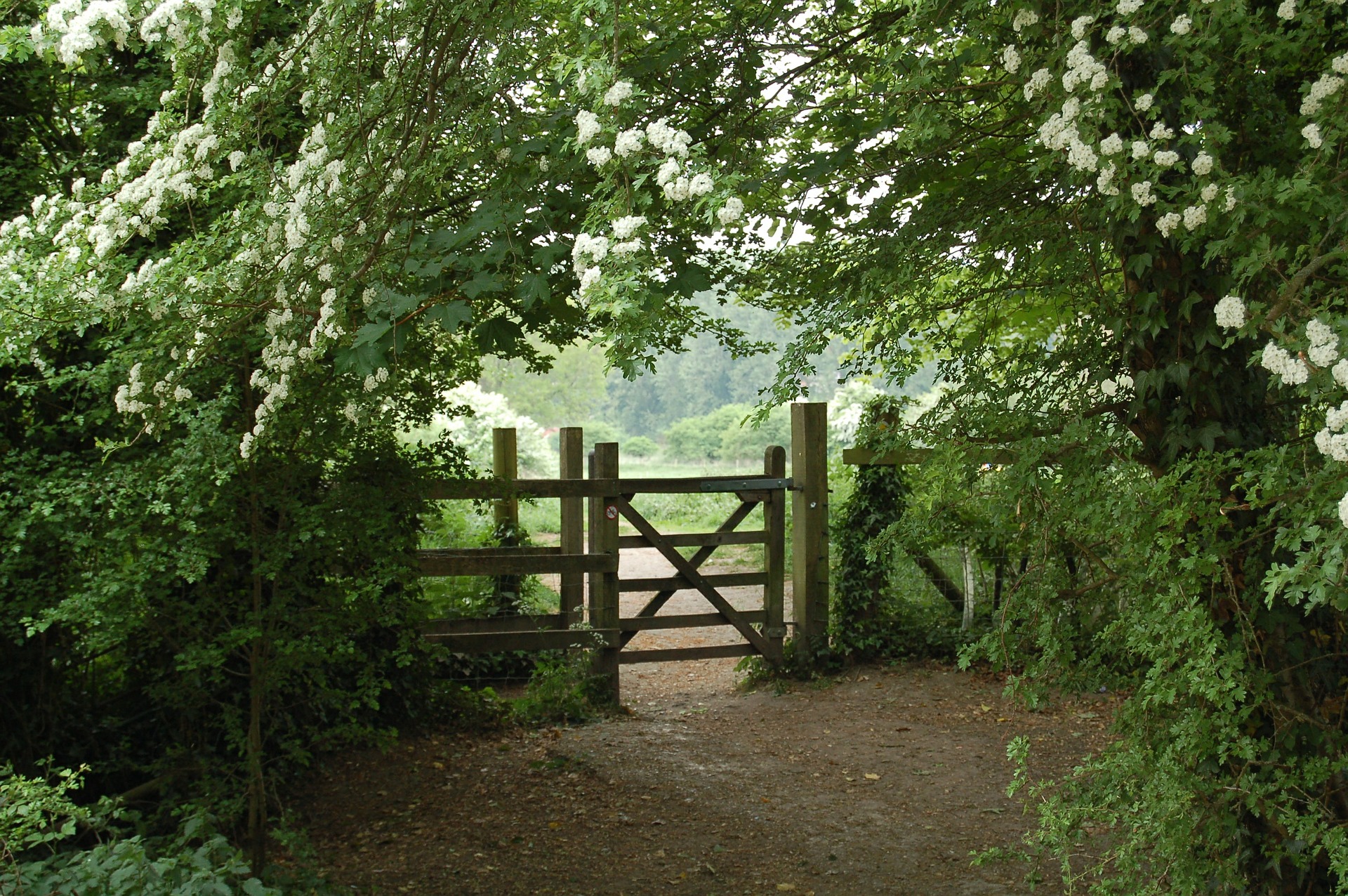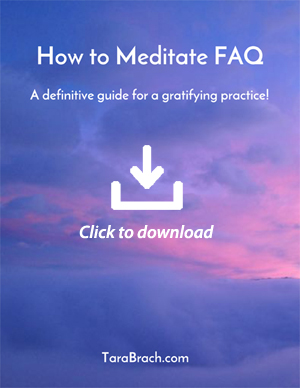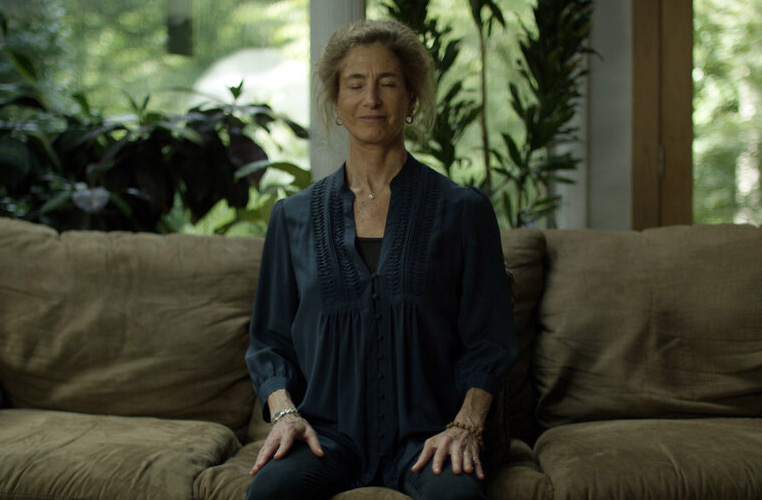As one of the American pioneers credited for bringing Eastern spirituality to the West, Ram Dass had more than four decades of spiritual training to help guide him when he suffered a massive cerebral hemorrhage in 1997. Nonetheless in the hours after his devastating stroke, he lay in a gurney staring at the pipes on the hospital ceiling, feeling utterly helpless and alone. No uplifting thoughts came to rescue him, and he was unable to regard what was happening with mindfulness or self-compassion. In that crucial moment, as he put it bluntly, “I flunked the test.”
I sometimes tell his story to students who worry that they too have “flunked the test.” They’ve practiced meeting difficulties with mindfulness, but then they encounter a situation where the fear or distress or pain is so great that they just cannot arouse presence. They’re often left with feelings of deep discouragement and self-doubt, as if the door of refuge had been closed to them.
I start by trying to help them judge themselves less harshly. When we’re in an emotional or physical crisis, we are often in trance, gripped by fear and confusion. At such times, our first step toward true refuge—often the only one available to us—is to discover some sense of caring connection with the life around and within us. We need to enter refuge through the gateway of love.
Ram Dass passed through this gateway by calling on Maharajji (Neem Karoli Baba),the Indian guru who had given him his Hindu name, and who’d died more than thirty years earlier. In the midst of his physical anguish, powerlessness, and despair, Ram Dass began to pray to Maharajji, who to him had always been a pure emanation of love. As he later wrote, “I talked to my guru’s picture and he spoke to me, he was all around me.” That Maharajji should be immediately “there,” as fully available as ever, was to Ram Dass pure grace. At home again in loving presence, he was able to be at peace with the intensity of the moment-to-moment challenge he was facing.
The gateway of love is a felt sense of care and relatedness—with a loved one, the earth, a spiritual figure, and ultimately, awareness itself. Just as a rose needs the encouragement of light, we need love. Otherwise, as poet Hafiz says, “We all remain too frightened.”
Today, researchers are discovering what happens in the brains of meditators when their attention is focused on lovingkindness or compassion, two primary expressions of love. Sophisticated brain scans show that the left frontal cortex lights, correlating strongly with subjective feelings of happiness, openness, and peace.
When I teach meditations for the heart, I often ask my students to visualize being held by a loved one and/or to offer gentle self-touch as part of the practice. Research shows that a twenty-second hug stimulates production of oxytocin, the hormone associated with feelings of love, connectedness, and safety. Yet, we don’t need to receive a physical hug to enjoy this benefit: Either imagining a hug, or feeling our own touch—on our cheek, on our chest—also releases oxytocin. Whether through visualization, words, or touch, meditations on love can shift brain activity in a way that arouses positive emotions and reduces traumatic reactivity. Where attention goes, energy flows: We have the capacity to cultivate an inner refuge of safety and love.
In assisting students and clients as they develop such a refuge, I often ask the following questions:
1. With whom do you feel connection or belonging? Feel cared for or loved? Feel at home, safe, secure?
Some people immediately identify an individual—a family member, friend, healer, or teacher—whose presence creates the feeling of “at home.” For others, home is a spiritual community, a twelve-step group, or a circle of intimate friends. Sometimes the feeling of belonging is strongest with a person who has died, as for Ram Dass with Maharajji, or with a person you revere but may never have met, such as the Dalai Lama, Gandhi, or Mother Teresa. Many people feel drawn to an archetypal figure like the Buddha or Jesus, Kwan-yin (the bodhisattva of compassion), the Virgin Mary, or some other expression of the divine mother. I’ve also known a good number of people who feel comfort and belonging when they call to mind their dog or cat. I assure students that no one figure is more spiritual or elevated or pure than another as a focus. All that matters is choosing a source of safe and loving feelings.
2. When and where do you feel most at home—safe, secure, relaxed, or strong?
Some people find a sense of sanctuary in the natural world, while others feel more oriented and secure when they’re surrounded by the noise and vibrancy of a big city. Your safe space may be a church or temple, your office, or a crowded sports stadium. Some people feel most at home curled up with a book in bed—others when they’re working on a laptop at a busy coffee shop. Certain activities may offer a sense of ease or flow, from playing Ping-Pong to cleaning out a closet to listening to music. Even if you almost never feel truly relaxed and secure, you can build on any setting or situation where you are closest to feeling at home.
3. What events or experiences or relationships have best revealed to you your strength, your courage, your potential?
Sometimes what arises is a memory of a particularly meaningful experience—an artistic or professional endeavor, a service offered, an athletic feat—that was a source of personal gratification or accomplishment. Whatever the experience, it’s important to explore how it deepens our trust of ourselves.
4. What about yourself helps you to trust your goodness?
When we’re in the grip of trauma or very strong emotion, it may not be possible to reflect on goodness, our own or others’. But when the body and mind are less agitated, this inquiry can be a powerful entry to inner refuge. I often ask clients or students to consider the qualities they like about themselves—humor, kindness, patience, creativity, curiosity, loyalty, honesty, wonder. I suggest that they recall their deepest life aspirations—loving well, realizing truth, happiness, peace, serving others—and sense the goodness of their hearts’ longings. And I invite them to sense the goodness of their very essence, their experience of aliveness, awareness, and heart.
5. When you are caught in fear, what do you most want to feel?
When I ask this question, people often say that they just want the fear to go away. But when they pause to reflect, they often name more positive states of mind. They want to feel safe or loved. They want to feel valued or worthwhile. They long to feel peaceful, at home, or trusting. Or they want to feel physically held, embraced. The words that name our longings, and the images that arise with them, can become a valuable entry to inner refuge. Often the starting place is to offer ourselves wishes or prayers such as, “May I feel safe and at home.” Like offering the phrases in the classic lovingkindness mediation or placing a hand on the heart, expressions of self-care help us open to an experience of belonging and ease.
With each of these inquiries, as we tap into a nourishing memory, thought, prayer or feeling, the invitation is to deepen our attention to that felt experience. Neurons that fire together, wire together. The more we pay attention to the sense of another’s love, to a place that provides beauty and ease, to our own strengths and aspiration, the more we connect with the heartspace that will offer a healing refuge.
At the time of his stroke, Ram Dass had studied with, revered, and prayed to his guru, Maharajji, over a period of thirty years. The gateway to a vast loving presence was already open, and in his moment of great need, he could walk through it to healing. But I’ve seen time and again that the gateway of the heart is still available even for people have had little experience with inner training. All that is needed is the longing to heal and the willingness to practice. As poet Hafiz writes, “Ask the friend for love, ask him again . . . For I have found that every heart will get what it prays for most.”
Adapted from True Refuge
For more information visit: www.tarabrach.com
photo: pixabay.com – Argus398


